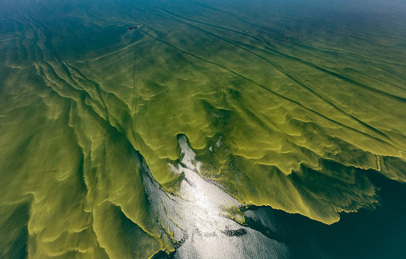Lethal algae blooms - an ecosystem out of balance
Toxic formations across the US and the Baltic are part of a worrying trend linked to the climate crisis and farming methods

On 3 August 2014, residents of Toledo, Ohio, woke to the news that overnight their water supply had become toxic. They were advised not only to avoid drinking the water, but also touching it – no showers, no baths, not even hand-washing.
Boiling the water would only increase its toxicity while drinking it could cause “abnormal liver function, diarrhoea, vomiting, nausea, numbness or dizziness”, read a statement from the City of Toledo, warning residents to “seek medical attention if you feel you have been exposed”.
Toledo sits on the shores of Lake Erie, one of North America’s five great lakes. About half a million residents of the city and surrounding area have relied on Lake Erie for water for hundreds of years.
After the news broke on 3 August bottled water quickly vanished in concentric circles around the city. Eventually, a state of emergency was called and the national guard arrived with drinking water.
Toledo’s water crisis lasted for nearly three days. But the water wasn’t toxic due to an oil spill or high lead levels, as in Flint, Michigan. Toledo’s water was tainted by something altogether different: an algae bloom.
Toledo is not alone. According to scientists, algae blooms are becoming more frequent and more toxic worldwide.
A 14-month long algae bloom in Florida, known as the “red tide”, only ended earlier this year, after killing more than 100 manatees, 127 dolphins and 589 sea turtles. Hundreds of tonnes of dead fish also washed ashore.
In 2018, there were more than 300 reported incidents of toxic or harmful algae blooms around the world. This year about 130 have been listed on an international database, but that number is expected to increase.
Recent reports of a new ‘‘red tide’’ emerging in Florida and more dead wildlife have put the tourist and fishing industries on alert, braced for further devastation.
The causes of the blooms vary, and in some cases are never known, but in many parts of the world they are being increasingly linked to climate change and industrialised agriculture. (Read more)




